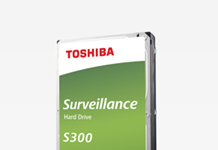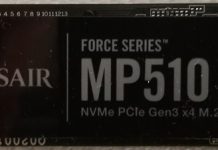|
|
Review: Samsung T3 USB3.1 (gen1) SSD Reviewed by: Wendy Robertson Provided by: Samsung |
In this day and age, everyone who uses a computer will
require a way of getting data from A to B. For just a few megabytes, or
gigabytes, of data, a USB pen drive, or cloud storage will be sufficient. But
what if you need to move around large amounts of data?
You can of course use an external USB HDD to store and
retrieve the data. An external USB HDD is cheap, and can have a large capacity,
but they are quite slow when tens of gigabytes of data needs to transferred to
and from the device. Not only that, an HDD is quite a fragile piece of kit. You
certainly won't want to drop it, or subject it to any violent shock, while it's
running.
An ideal solution, in my opinion is an external USB3 SSD.
The downside of this is they tend to be pretty expensive. On the positive side
though, they are much faster than an HDD, and much more robust. If you drop it
while data is being transferred, the chances are it will continue doing its
task without any fuss.
Enter the new Samsung T3 external USB3 SSD. Samsung was kind
enough to send me a review sample for testing, and in this article I will show
you how this tiny SSD performs. The intended use of the Samsung T3 external SSD
is different to that of the traditional desktop SSD that I usually test here at
Myce.wiki, so the tests I carry out on the Samsung T3, will be relevant to the
T3's intended use.
The T3 is available in 250GB, 500GB, 1000GB, and 2000GB
capacities. The version that Samsung sent me was the 2000GB version.
Samsung company information
Samsung should need no introduction, but those of you who
would like to find out more about Samsung, can do so at their website.
So let's find out how this new SSD performs in our range of
tests.
The Samsung T3 2000GB SSD
Now it’s time to take a look at the drive itself and what it
came shipped with.
Packaging

The review sample I received was the retail version.
Included in the package was the Samsung T3 2000GB SSD, installation
instructions, warranty information, and a rather short USB3.1 cable which supplies
power to the Samsung T3, and the USB3.1 (USB C type) data connection.
The Samsung T3 weighs in at only 51 grams, and the drive is
tiny, measuring only 74mm in width, 58mm in height, and 10.5mm in depth.
The T3 case is a mixture of metal and plastic, and feels
more solid than the previous T1 model, which I reviewed last year. The metal
part of the case also enhances the thermal performance of the drive,
dissipating heat away from the SSD controller and the NAND.

Inside the Samsung T3 external USB3 SSD, we find a USB3.1 interface
board to connect the T3 to the outside world, a Samsung MGX SSD controller, and
Samsung's own TLC 3D V-NAND. The Samsung T3 also supports USB UASP mode, which
allows NCQ (native command queuing) and queue depth scaling with a UASP enabled
USB3 port on the host PC, which is supported natively from within Windows 8/8.1
and later.
The T3 is also supplied with software to initialise and format
the SSD ready for use. The T3 is formatted using exFAT by default, so it should
be compatible with Windows and Apple based systems. If you wish to use the
Samsung T3 with an Android device, you will need to format the drive as FAT32.
The supplied software allows the T3 to be encrypted with a
user password, and also displays information about the Samsung T3 external USB3
SSD.
Specifications

Let’s head to the next page where we take a look at our
testing methods and the review PC....

















